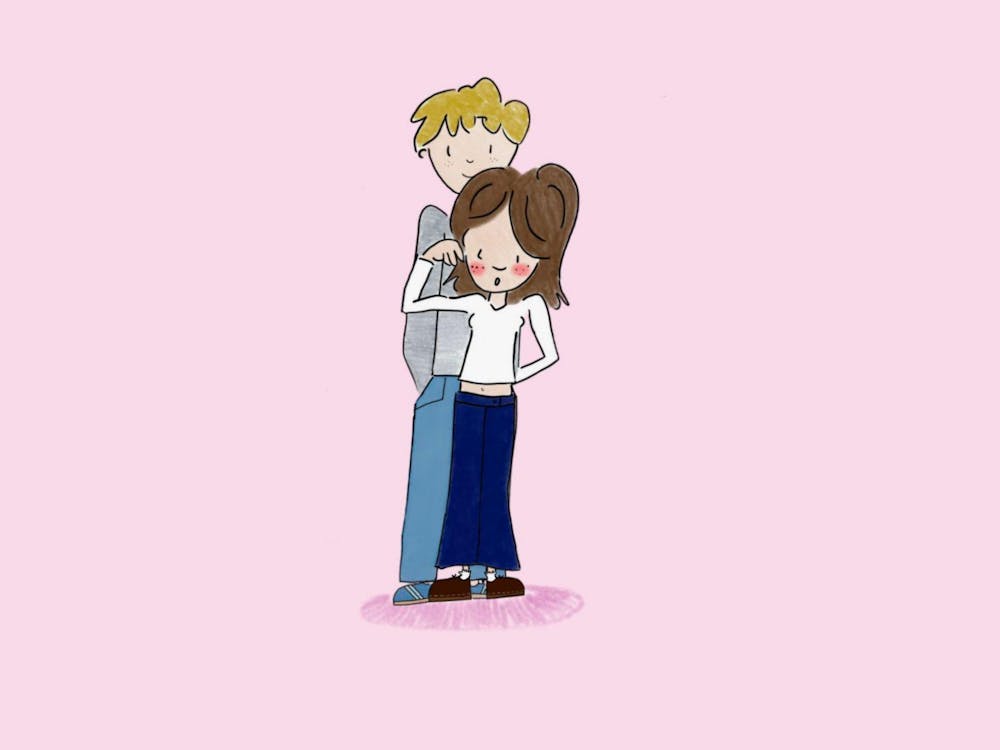Anyone who has gone for an early morning Saturday run around Grounds or set off to beat the Bodo’s pileup might spot a few remnants from the night before — crumpled cans, leftover paper plates from Christian’s and often, someone trudging home in someone else's t-shirt.
A tongue-in-cheek phrase, the “walk of shame” infamously refers to the trek home from a one-night stand, where walkers are typically visibly disheveled. At the University — where the vibrant social scene easily forms the whirlpool of hookup culture — it is all-too-common for students to both participate in and observe these journeys.
But whether or not students find that the “walk of shame” actually feels shameful varies. While some feel neutral about the walk, others view it as a self-imposed punishment for their actions the night before. The Cavalier Daily spoke to four students, all of whom asked to only be identified by their year and school in order to discuss sensitive topics.
One third-year College student said that while she prefers to swiftly depart after unexpected sleepovers, she finds that the commonality of the post-hookup walk home alleviates any potential negative views about herself.
“Everyone does [the walk of shame]. It's not that crazy,” the third-year College student said. “What else are you gonna do? It's not like you want to live with this guy.”
This neutral stance is shared by a third-year Batten student, who said that she believes that most people opt to see the humor in the “walk of shame,” rather than condemn it.
“Obviously there's negative words used in the title … but I think that people kind of wear it with pride,” the third-year Batten student said. “I think people find [the walk of shame] funny.”
But beyond these nuanced feelings about this infamous trek, students seem to agree on its biggest risk — running into the last people they would want to see in such a disordered state.
The third-year College student shared her worst experience with the walk of shame — running into a friend’s extended family. The student said that the experience was so unpleasant, in fact, that she reconsidered if future hookups were worth the risk of this happening again.
“I [walked] home, and I [ran] into my friend and her mom and her aunt, who [were] in town for Parents’ Weekend. They looked at me like I had murdered someone,” the third-year College student said. “After that, I was like, ‘Maybe I shouldn't do this.’”
Judgmental or knowing once-overs from onlookers typically stem from walkers’ wardrobes. For those who choose to rewear their outfits from the night prior, it can be extra difficult to mitigate the awkwardness of trek home. Additionally, one student noted that the range of different party dress codes — particularly during the winter months — can add another level of obviousness and absurdity to the trek.
A third-year Engineering student recalled seeing female students heading to Christmas-themed parties at night, and then again the next morning, still clad in seasonal red-and-black garb.
“It's hard to avoid being clocked if you're [walking home] dressed for a theme party,” the third-year Engineering student said.
Those with only their previous night’s outfit at their disposal are at the mercy of whatever their one-and-done is willing to offer from their own closet — if they are willing.
“I literally never come back [from a hookup] in the clothes I wore [out],” the third-year College student said. “As long as your hair isn't messed up … and the hickeys aren't there, you could easily just be wearing [your own] sweats out [on a] regular day.”
Although some students see borrowing clothes as a foolproof strategy to make their way back incognito, others point out that leaving in someone else’s clothes can come with its own hang-ups, possibly making it even harder to escape unwanted attention.
The third-year Batten student expanded on differences in size and style between her and her hookup, which made for extra difficulties in finding a solid ensemble to sport on her journey.
“It's a little bit humiliating, because I've had to wear size extra-large Adidas pants that swish as you walk at 10 a.m.,” the third-year Batten student said. “I was in a pink mini dress and a leather jacket [the night before], and I was like … ‘I'm not wearing this [and walking] down University Avenue.’”
Although the telltale signs of the “walk of shame” can be more obvious for female students — with many noting their night-out outfits stand out when worn during the daytime — men are far from exempt from the phenomenon.
Still, students report that men’s shameful walks generally come with less stress. Outside of the occasional semiformal or formal event, guys who wear the same staple outfit of a t-shirt and pants from class to a night out can walk back the next morning undetected.
“When my ex-boyfriend [and I] were dating, he would always sleep over at my place, and he would be running late to class, so his walk of shame would just be straight [there],” the third-year College student said. “One time he was running so late, he took my used socks.”
However, different sexual identities can add another complicated layer to hookups, particularly in Queer relationships where participants are not “out,” or wanting others to know about their sexual preferences. In these situations, the walk of shame can even pose a risk to students’ safety, so they must take stricter measures.
“A lot of times, for gay men in particular, the walk of shame doesn't happen the next morning,” the third-year Engineering student said. “You get kicked out that night … and that's one of the scariest parts [of getting] with someone who [hasn’t] come to terms with themselves.”
Occasionally, internal discomfort surrounding sexual identity can lead to situations where a Queer participant is abruptly dismissed or feels ignored by a partner following an encounter. The third-year Engineering student noted that during his first year, he realized a hookup was intentionally avoiding helping him get back to his dorm.
“There was a guy who I was getting with who lived in [a fraternity] house,” the third-year Engineering student said. “He would purposefully pretend to be really hungover … so I would need to walk [back] to new dorms and it was miserable.”
These factors considered, being driven back is the ideal method of return for many students, with rideshare services like Uber also being popular options if neither student has a car of their own. Street corners littered with Veo scooters are also viable options — although some students mentioned that using one could only make the situation worse.
“There is no way that I will be Veo-ing from any man’s home,” the third-year College student said. “For the most part, I really like being driven home.”
While some would rather not sacrifice their pride and request a ride back from their hookup, these students agreed that whether their partner offers to drive or call an Uber for them can shed light on their character.
“There have been some instances where the person has a car and still makes me walk, and then I feel unvalued and like they don't care at all,” the third-year Batten student said. “If you don't have a car, I don't … expect you to drive me,”
From feeling insulted to viewing the walk as a nonchalant aspect of the University experience, many students agreed that the walk of shame’s age-old negative associations with female sexuality still have a hold on them in a way they say men do not necessarily experience.
“I think [the double-standard] goes back to the [fact that] guys get a high five when they get laid, and girls are called sluts … Even if it's just joking,” the third-year Batten student said. “There's no neutrality, it's just the way sex is viewed by gender.”
Whether the inherent judgment of the phenomenon is truly felt or not varies from person-to-person, but regardless, students find the walk of shame to be a rite of passage that must be experienced to be fully understood.







